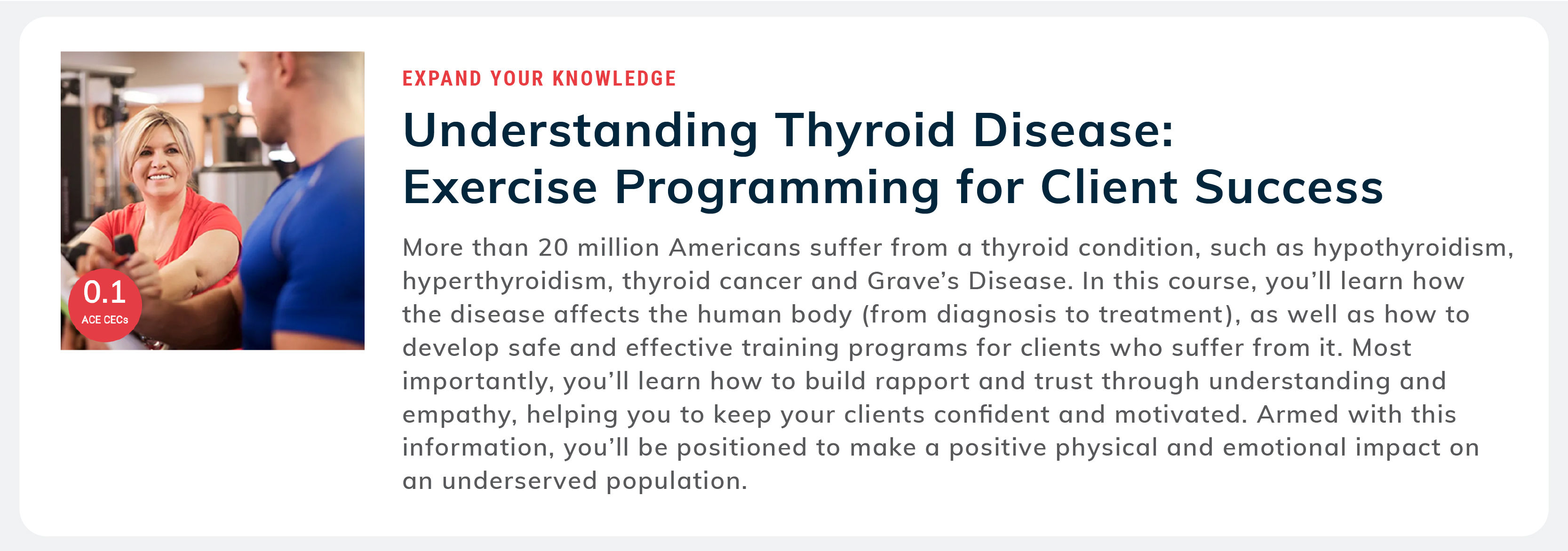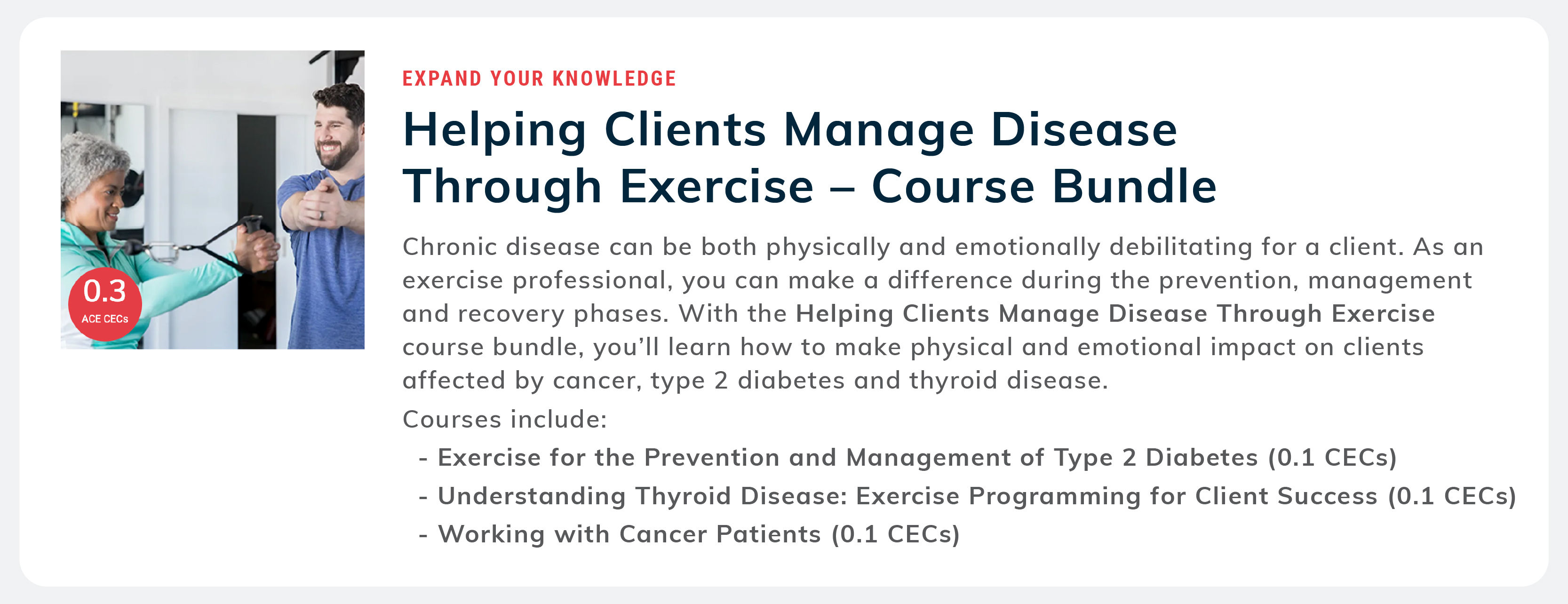
When I was 37, a normal annual checkup took an unexpected turn when my doctor found a quarter-sized lump on my thyroid. I had no symptoms of thyroid problems, so it was a bit of a surprise. She immediately made an appointment for me with an endocrinologist for that week. I told her I wasn’t sure I could make it that day because I had to take my sons to their ski lessons. She gave me a look that said, “Seriously?” and told me I should do what I could to get to it. On my ride home, it hit me. Wait…could this be cancer?
What Is the Thyroid?
The thyroid is a vital endocrine organ. This butterfly-shaped gland sits at the base of the front of the neck and produces hormones necessary for metabolism and healthy growth and development. Sometimes, the thyroid produces too much (hyperthyroid) or too little (hypothyroid) of its hormones, which creates a host of signs and symptoms.
Victoria Finn, MD, a board-certified endocrinologist with Medical Offices of Manhattan, notes that an estimated 5 to 10% of the global population is affected by thyroid conditions, and in the U.S., approximately 20 million people currently have some form of thyroid disorder. Women are five to eight times more likely than men to develop thyroid diseases.
“Thyroid disease is very common,” agrees Courtney Gibson, MD, a Yale Medicine endocrine surgeon and associate professor of surgery at Yale School of Medicine. “According to the American Thyroid Association, up to 60% of people with thyroid disease are unaware of their condition. The prevalence increases with age, with the highest rates being found in individuals over the age of 60 years.” Women, Dr. Gibson continues, are more likely to be affected than men, and the most common thyroid disorder is hypothyroidism.
“An underactive thyroid slows down your metabolism,” says Dr. Finn. “The most common signs and symptoms include fatigue, sluggishness, weight gain, cold intolerance, constipation, daytime sleepiness, a slow heart rate, dry skin, hair loss, brittle nails, depression, brain fog, memory issues, irregular periods, and puffiness of the face and body.”

At the other end of the spectrum is a thyroid producing too many hormones. “An overactive thyroid speeds up your metabolism,” continues Dr. Finn. “The signs and symptoms associated with this condition include weight loss, anxiety, irritability, heat intolerance, sweating, a rapid or irregular heart rate, body tremors, frequent bowel movements or diarrhea, and insomnia.”
Some signs and symptoms of hyper- and hypothyroidism overlap, adds Dr. Finn, and some are difficult to distinguish from other medical conditions. The thyroid can also develop benign nodules, which are non-cancerous lumps, or the gland can enlarge, resulting in what’s called a goiter.
Then there’s thyroid cancer, which is often asymptomatic. There are four types of thyroid cancer, the most common one being papillary carcinoma, which typically has a very high cure rate.
“Thyroid cancer remains the fastest growing cancer in women, with papillary thyroid cancer being the most common cancer type,” says Dr. Gibson. “This increase is generally attributed to increased use of imaging studies and biopsies, leading to earlier diagnosis. Fortunately, thyroid cancer, in general, is slow-growing and has an excellent prognosis in most cases.”
With that said, due to the improved technology, the criteria for treating thyroid nodules have tightened up in recent years. “New imaging modalities have enabled the detection of tiny, slow-growing tumors that could have remained undetected and caused no harm, even if left untreated,” explains Dr. Finn. “Currently, we have strict criteria for evaluating thyroid nodules, which prevent us from over-diagnosing and over-treating.”
How Does Lifestyle Influence Thyroid Health?
Unlike the heart or brain, the thyroid doesn’t respond directly to lifestyle habits like diet or exercise. “While there are no specific ways to take care of your thyroid,” says Dr. Gibson, “there are common ways to maintain good health in general, including eating a balanced diet, exercising regularly, minimizing processed food intake, limiting exposure to environmental toxins and developing healthy sleep habits.”
Dr. Finn agrees and adds that reducing stress and following an anti-inflammatory eating pattern are also key. “An anti-inflammatory diet emphasizes fruits, vegetables, lean meat, healthy fats and whole foods. A low-gluten diet can also be beneficial in reducing antibodies associated with autoimmune inflammation, such as Hashimoto’s thyroiditis.”
Here are some more specifics on how diet, physical activity and limiting exposure to environmental toxins can help support both thyroid and overall health.
Diet
Specifically, consuming foods rich in iodine, selenium, zinc and iron is also necessary for proper thyroid function. “Iodine is essential for the production of thyroid hormones,” explains Dr. Finn. “In developed countries, iodine deficiency is rare due to salt iodization. We also obtain iodine from dairy products, eggs, fish and seaweed. Selenium and zinc are important for the production of active thyroid hormones. Brazil nuts, sunflower seeds, tuna, eggs and mushrooms are good sources of selenium. Zinc can be found in shellfish, beef, pumpkin seeds and legumes.” Table 1 presents a summary of food sources for these nutrients.
Table 1. Key Micronutrients for Thyroid Function and Where to Find Them
|
Micronutrient
|
Why It Matters for the Thyroid
|
Rich Food Sources*
|
|
Iodine
|
Essential building block of the thyroid hormones thyroxine (T4) and triiodothyronine (T3)
|
Iodized salt, seaweed (nori, kelp), cod, shrimp, dairy (milk, yogurt), eggs
|
|
Selenium
|
Converts T4 to its active form T3; antioxidant protection of the gland
|
Brazil nuts, tuna, sardines, shrimp, turkey, sunflower seeds, eggs
|
|
Zinc
|
Supports hormone synthesis and regulation of the hypothalamic-pituitary-thyroid axis
|
Oysters, beef, crab, pumpkin seeds, chickpeas, cashews
|
|
Iron
|
Required for the activity of thyroid peroxidase, the enzyme that makes T4 and T3
|
Lean red meat, chicken thighs, lentils, white beans, spinach, tofu, iron-fortified cereals
|
*Lists are not exhaustive—aim to include a variety of these foods to meet recommended intakes.
Physical Activity
Dr. Finn also highlights the role that physical activity plays in thyroid health. “Regular exercise helps keep your overall hormones balanced, and maintaining a healthy weight is important because gaining weight increases the need for thyroid hormones.”
While there are no specific recommendations for thyroid health regarding exercise for individuals with normal thyroid function, Dr. Finn says that individuals with an overactive thyroid require different exercise strategies.
“If diagnosed with hyperthyroidism, it is advisable to prioritize low-intensity exercises, such as walking and yoga, while avoiding high-intensity workouts,” Dr. Finn says. “Excessive exertion can exacerbate an already overactive metabolism and strain the heart muscle, resulting in accelerated heart rates, palpitations and hypoxia. Overtraining can also further exacerbate fatigue in individuals with hyperthyroidism.”
Environmental Factors
Environmental toxin exposure also influences thyroid health. According to Dr Finn, radiation exposure is the most established environmental risk factor for thyroid disease. “It’s particularly concerning if exposure occurred during childhood, as the thyroid gland is more susceptible to any alteration at this stage.”
In addition to radiation exposure, mounting evidence suggests that chemicals known as hormone-disruptors are also affecting our thyroids. “Bisphenols and phthalates found in plastics can interfere with thyroid hormone production,” explains Dr. Finn. “However, more research is necessary to confirm this.”
Phthalates are plasticizers that are frequently added to PVC and other plastics to improve flexibility. Because they’re used in an estimated 90 to 95% of flexible plastic products, they’re practically ubiquitous in items ranging from medical tubing and food packaging to cosmetics and household goods. Some phthalates (such as DEHP, DINP and DBP) have been restricted—especially in children’s toys and baby products (e.g., under EU Directive 2005/84 and U.S. CPSIA limits of 0.1%)—but manufacturers often replace them with other, less-regulated phthalates.
Bisphenols are chemicals used to make plastic more rigid. You might have seen BPA-free labels on food and drink containers. BPA is a type of bisphenol that mimics estrogen, which can confuse the body and affect reproduction, behavior and metabolism, so many manufacturers have removed it from their products. However, like phthalates, there’s a high chance that they’ve been replaced with other bisphenols that may have the same repercussions.
While avoiding all chemical exposures is nearly impossible, clients who are concerned about thyroid health can take simple, proactive steps to reduce their exposure to hormone-disrupting chemicals like phthalates and bisphenols. Encourage clients to avoid microwaving food in plastic containers, choose glass or stainless steel over plastic for food and beverage storage, and opt for personal care products labeled “phthalate-free” or “fragrance-free,” since synthetic fragrance is often a hidden source of phthalates. Additionally, limiting the use of canned foods (which may be lined with bisphenols) and reducing reliance on plastic-packaged products can further decrease exposure. Recommending these small changes helps clients support overall health without requiring you to step outside your scope of practice as a health and exercise professional. Additionally, they align with broader public health recommendations for reducing endocrine-disrupting chemicals in daily life.

Mental Health Matters, Too
There is evidence that stress also influences thyroid health. For example, chronic stress has been associated with an increased risk of subclinical hypothyroidism in women, which may be due to the effects of stress hormones like cortisol, which can interfere with the hypothalamic–pituitary–thyroid (HPT) axis. Subclinical means that thyroid-stimulating hormone (TSH) levels are elevated, but levels of thyroxine (T4) are normal. Subclinical hypothyroidism often comes with no definitive symptoms. It can be temporary or long-lasting and may or may not require treatment.
Other studies suggest a linear association between depression, anxiety and thyroid disease—the greater the levels of depression and anxiety, the greater the risk of thyroid disease. Researchers note that this is an area that should be considered when trying to prevent thyroid disease.
Sleep can also influence thyroid function. For example, a recent systematic review suggests that hypothyroidism and insomnia have a bidirectional relationship—each condition can aggravate the other. The authors propose that shared mechanisms such as HPA-axis dysregulation (a breakdown in the stress-response circuit that links the hypothalamus, pituitary gland and adrenal glands), low-grade inflammation and insulin resistance may help explain why they often occur together.
How You Can Help Support Your Client’s Thyroid Health
With your expertise in behavior change and wellness, you’re well equipped to guide clients toward lifestyle choices that support a healthy thyroid. Promoting thyroid health follows many of the same principles as supporting overall wellness: eating a balanced diet, engaging in regular physical activity, managing stress and getting quality sleep. While these strategies can’t prevent all thyroid conditions—especially autoimmune-related types—they can reduce risk factors and help manage symptoms.
For clients who already have thyroid disease, here are some specific tips you can offer:
- Encourage clients to start integrating anti-inflammatory foods into their meals and snacks. This includes fruits, vegetables, whole grains, legumes, nuts, seeds, lean proteins (including from seafood) and healthy fats, like olive and avocado oils. A Mediterranean-style dietary pattern is a great example of an anti-inflammatory diet.
- Challenge clients to limit or avoid ultra-processed foods, like processed meats, as well as foods and beverages with added sugar.
- For clients with hyperthyroidism (an overactive thyroid), encourage low-intensity activities, like walking, yoga and light strength training. Explain that higher-intensity activities can exacerbate their condition and create other problems, such as irregular and high heart rates and a lack of oxygen getting to the heart.
- Help your clients identify sources of stress in their lives and brainstorm solutions to them. In addition, offer to provide instruction on stress-management techniques, including deep breathing exercises and meditation. Remind them that staying connected and spending time with loved ones has also been shown to help reduce stress, depression and anxiety.
- Talk to your clients about their sleep habits. Help them develop a healthy bedtime routine, including preparing their bodies and brains for sleep by dimming the lights, getting off devices, engaging in soothing activities, and creating a cool, calm sleep environment.
- Don’t hesitate to refer out when warranted. If you suspect a client is having mental health issues or has symptoms of hyper- or hypothyroidism, encourage them to see their healthcare practitioner for evaluation. It’s important to note that people who take thyroid hormones can also go into hyper- or hypothyroidism, triggering a need for medication adjustment.
As for me, the lump was precancerous for papillary thyroid cancer, and my thyroid was removed, so I’ve been taking thyroid hormone replacement therapy ever since. I notice a clear difference in heart rate and metabolism when I’m stressed, which is a reminder that thyroid health—whether you have a gland or rely on medication—remains vital throughout life because it affects how we feel, function and show up in our daily lives.





 by
by 




